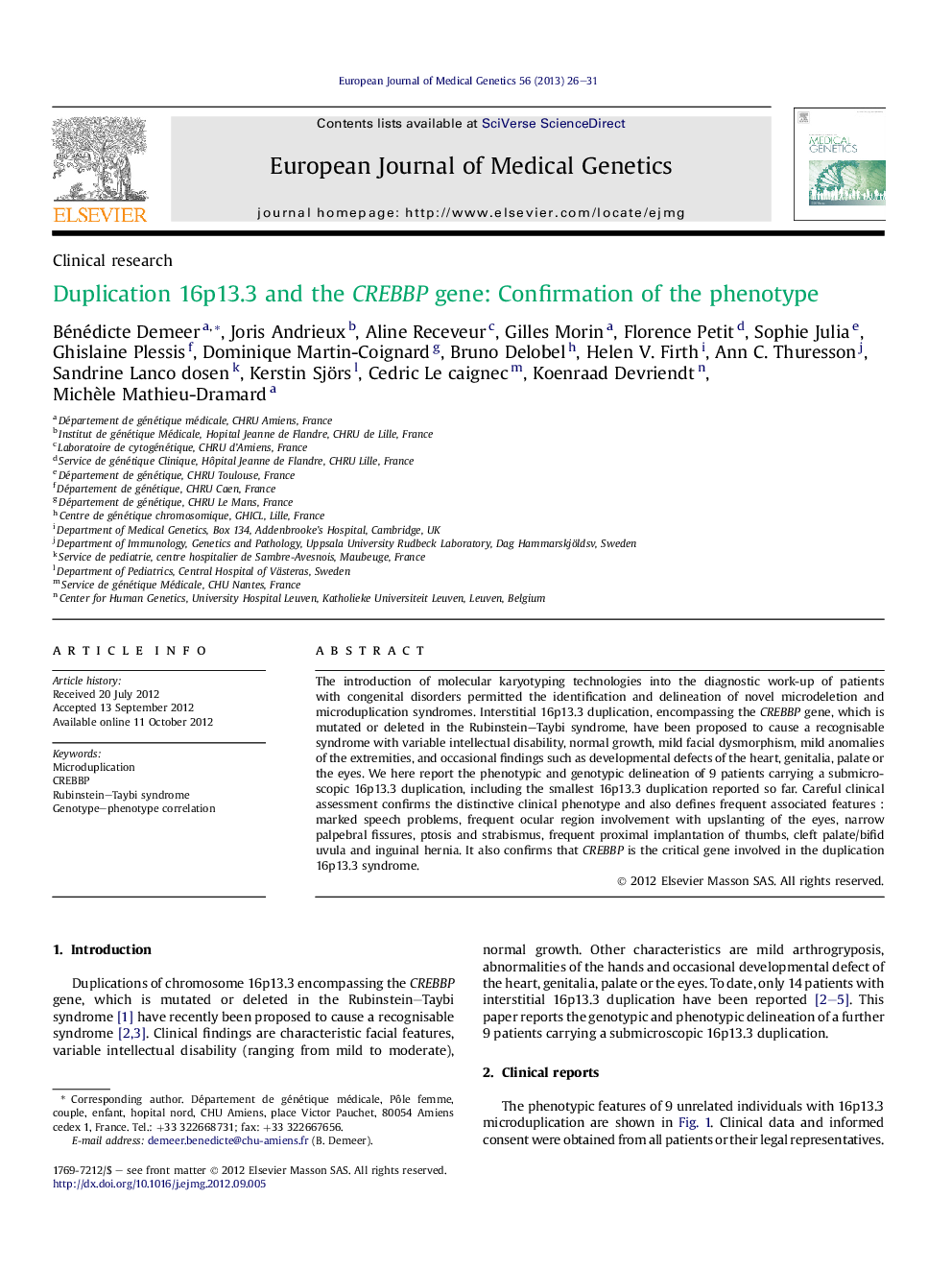| Article ID | Journal | Published Year | Pages | File Type |
|---|---|---|---|---|
| 2814164 | European Journal of Medical Genetics | 2013 | 6 Pages |
Abstract
The introduction of molecular karyotyping technologies into the diagnostic work-up of patients with congenital disorders permitted the identification and delineation of novel microdeletion and microduplication syndromes. Interstitial 16p13.3 duplication, encompassing the CREBBP gene, which is mutated or deleted in the Rubinstein-Taybi syndrome, have been proposed to cause a recognisable syndrome with variable intellectual disability, normal growth, mild facial dysmorphism, mild anomalies of the extremities, and occasional findings such as developmental defects of the heart, genitalia, palate or the eyes. We here report the phenotypic and genotypic delineation of 9 patients carrying a submicroscopic 16p13.3 duplication, including the smallest 16p13.3 duplication reported so far. Careful clinical assessment confirms the distinctive clinical phenotype and also defines frequent associated features : marked speech problems, frequent ocular region involvement with upslanting of the eyes, narrow palpebral fissures, ptosis and strabismus, frequent proximal implantation of thumbs, cleft palate/bifid uvula and inguinal hernia. It also confirms that CREBBP is the critical gene involved in the duplication 16p13.3 syndrome.
Related Topics
Life Sciences
Biochemistry, Genetics and Molecular Biology
Genetics
Authors
Bénédicte Demeer, Joris Andrieux, Aline Receveur, Gilles Morin, Florence Petit, Sophie Julia, Ghislaine Plessis, Dominique Martin-Coignard, Bruno Delobel, Helen V. Firth, Ann C. Thuresson, Sandrine Lanco dosen, Kerstin Sjörs, Cedric Le caignec,
